It might be no surprise that I grew up as a fan of Romance of the Three Kingdoms. I consumed various media about this story — from the novel itself to various Koei-made games (the Romance of the Three Kingdoms and Dynasty Warriors series, and even Kessen), along with movies, TV shows, and podcasts. Still, I couldn’t help but be wary when Creative Assembly announced a Total War game based on this setting. Past titles would have you recall launch day woes and optimization issues.
Almost 70 hours later and I’m completely invested in Total War: Three Kingdoms. I was lost in a tale of lands united and divided, heroes fighting and falling, and factions rising and collapsing. It also helped that graphics and performance were excellent, with barely any issues as mentioned in our technical review.
The Story So Far
Luo Guanzhong’s novel, which was eventually translated and reprinted for a global audience, remains one of the most poignant and enduring stories ever told about Chinese history and culture. Its characters were nuanced and depicted in great detail, each one has characteristics that you’d root for or despise. The setting tells of the collapse of the Han Dynasty and the eventual rise of the competing kingdoms of Wei, Wu, and Shu-Han — only for all three to be supplanted by the Sima clan and the Jin Dynasty.
Bits and pieces of the story are told by way of narration and cinematics. Even the old tutorial tips for loading screens are gone, replaced by a retelling of your campaign’s progression.
Your goal, as one of several Chinese warlords, is to either become the sole Emperor of China or to annihilate all who stand in your path. An upcoming early-adopter DLC also adds the Yellow Turban faction with their own goals in mind. Note that this DLC was not available at this time.
Historical Versus Sensational
Total War: Three Kingdoms has two vastly different modes of play: Romance and Records. Romance Mode, which is based on San Guo Yan Yi or the Romance of the Three Kingdoms takes inspiration from the novel. You’ll see superhuman feats on display, martial arts duels, lone warriors charging into the fray, hero skills, and more.
Records Mode, meanwhile, is based on Sanguozhi or the Records of the Three Kingdoms. This is the more historically accurate recounting of the time period. Generals are but human, surrounded by a cadre of bodyguards, their feats of glory tied to reality and your tactical acumen.
Records Mode offers a more grounded approach. It’s more akin to historical titles such as Total War: Rome 2 or Total War: Shogun 2. Romance Mode, meanwhile, turns battles into all-out fiestas. Think of it as a mix between the traditional combat of previous historical titles, just with a tinge of Total War: Warhammer’s “spells” in the form of certain melee based attacks, buffs, or debuffs.
You can make this decision before starting your campaign or a separate battle. Most of my playthrough was spent in Romance Mode conquering China as Cao Cao, Dong Zhuo, and Sun Jian.
Commanding And Conquering
Each warlord — from eventual rulers like Cao Cao and Liu Bei, bandits like Zheng Jiang, or tyrants such as Dong Zhuo — will have their specific faction perks along with starting officers. Naturally, you’ll want to play each leader to their strengths. Cao Cao, who focuses on manipulation, means that you’ll instigate proxy wars to keep rivals off your back. Sun Jian and the Sun family will focus on Bravery, boosting officer satisfaction and army discounts, while Dong Zhuo’s intimidation resource will lead to coercing other factions to do your bidding.
A focus of Total War: Three Kingdoms is character-building. Each hero is part of a designated class such as vanguards (who are troop killers) or strategists (who focus on debuffs). You’ll want to build them up accordingly, picking skill sets that complement the units that they field, or the assignments/administrative positions that they fill. You can even grow your dynasty by arranging marriages and having heirs.
Also, the old mechanic of wide recruitment has been replaced with a retinue-based system. You choose the units that your generals field and they stick with them for the entirety of your playthrough. You can swap them with other units, or you can even swap out a general with another character. Be warned that relationships also come into play which means generals who have different ideals might clash with others if they’re in the same army or city.
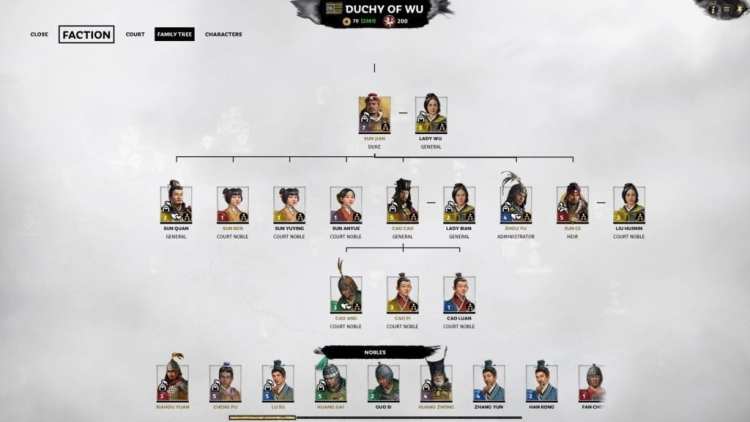
When the subject of historical accuracy comes up, you can tell people that you annexed and eventually adopted Cao Cao while playing as Sun Jian.
To Battle!
Total War games have often been about battle maneuvers and tactics, and Total War: Three Kingdoms is no different. You’ve got your open field battles, ambush battles, and settlement battles. Noticeably absent are naval battles which are a fairly conspicuous omission. Still, the greatest fight of the age — the Battle of Chi Bi (Red Cliff) — is represented in one of the game’s historical battles.
As for units, you’ve got an assortment of spearmen, swordsmen, archers (including repeating crossbows), melee cavalry, shock cavalry, ranged cavalry, and trebuchets. There are also upgraded versions that are dependent on the faction or the general’s level.
Controlling your army is as easy as can be especially when you’ve played previous titles. I noticed that very little micromanagement was needed during battles since many hero skills were passive or automatically re-casting. A few active skills were on cooldown which meant just having the wherewithal to notice when they’re usable once more.
One quibble would be the dueling prompts since multiple pop-ups can be annoying when they all appear at the same time. There are even instances when generals, obviously, refuse to duel because your character is beyond their capabilities. In relation to that, at least in Romance Mode, it’s possible to kill all enemy officers with the opposing army still eager for a fight. Novel-wise, armies should immediately break due to the massive morale hit. There were times when I just sent out mighty Lu Bu to wreak havoc, soloing the entire army, while my forces just withdrew.
Aesthetically Pleasing
Of course, none of the above would matter if the game looked or sounded horrible. Thankfully, Creative Assembly has done a spectacular job of churning out a title that truly captures the wonder and spirit of Chinese history and Luo Guanzhong’s story.
The campaign map is stunning, and transitioning between menus or zooming in and out is next to seamless. You’ll find fields of green in central China, while harsh deserts await you in the northwest. Walled cities block off your paths, while armies can encamp leading to a defensive engagement. Bandit hideouts are atop treacherous mountain paths, and the great rivers — the Yangtze, Yellow River, and Yu River — can be traversed with ease. The world of Total War: Three Kingdoms feels alive.
In addition to the above, Total War: Three Kingdoms also uses the Wu Xing philosophy or the five phases where fire, water, metal, earth, and wood either complement or counter one another. You’ll see this color-coded system in play for your heroes, units, and even building upgrades. There are also options to enable Chinese voice-overs to increase immersion and authenticity for your playthrough.
Ambition Knows No Bounds
I mentioned earlier that there are some issues with the dueling system. There are other minor gameplay concerns as well. For instance, the subject of female generals might come up just as it did in Total War: Rome 2. In Total War: Three Kingdoms, you’ll have a slew of female leaders. If you’ve played Koei games, you’ll know the more famous ones like Sun Shanxiang/Sun Ren, Diao Chan, Wu Zentian, and more. Since the game does not discriminate — discrimination is bad, folks — the AI has a habit of picking several available officers from a pool. This leads to moments wherein numerous randomly-generated heroes and heroines are all running around matching wits and weapons with Guan Yu or Taishi Ci.
Another genuine concern would be repetitiveness as time goes on. Although I barely noticed how time has elapsed while playing the game, there’s a good chance that you’ll realize how similar some tactics and army compositions become all too familiar in successive playthroughs. The campaign meta, right now, is all about flaming arrows and calling it a day.
Speaking of arrows, the AI can be lackluster, oftentimes leaving arrow towers and defensive positions, or marching along to your line of fire while leaving archers undefended for your cavalry to mow down. Even at harder difficulties, I was more challenged by sheer, overwhelming numbers than the flow of battle or AI competence.
Despite these shortcomings, Total War: Three Kingdoms still manages to provide an exceptionally enjoyable experience. As someone who’s played Total War and Three Kingdoms games for many years, this is the marriage of two worlds — something which originally intrigued me while also filling me with trepidation.
Several hours later, I found myself thoroughly engaged with no signs of stopping. I even had to tell myself that I had a review to write before the embargo lifted! Creative Assembly has boldly captured the essence and dynamism of this moment in history. You may not want to pursue Lu Bu, but you can definitely pursue Total War: Three Kingdoms.
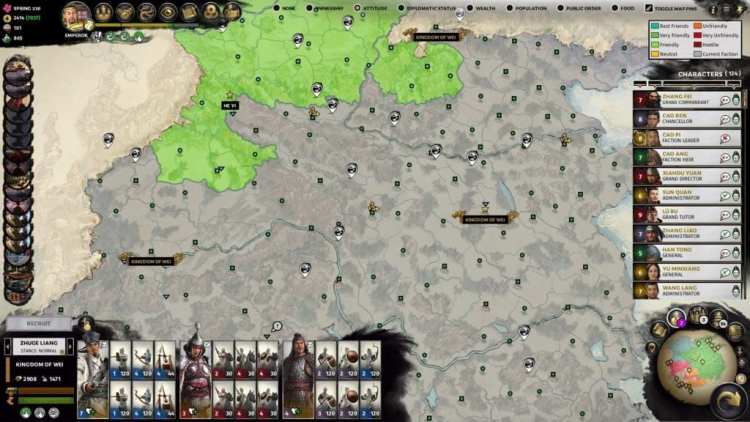
I managed to completely control most of China, except for He Yi’s/Gong Du’s territory since we were best buds.
Total War: Three Kingdoms releases on May 23. You can check out our technical review which goes more in-depth with regards to the graphics, performance, and options. Be sure to check out our future coverage which will include more campaign, battle, and faction guides. We’ll see you then.

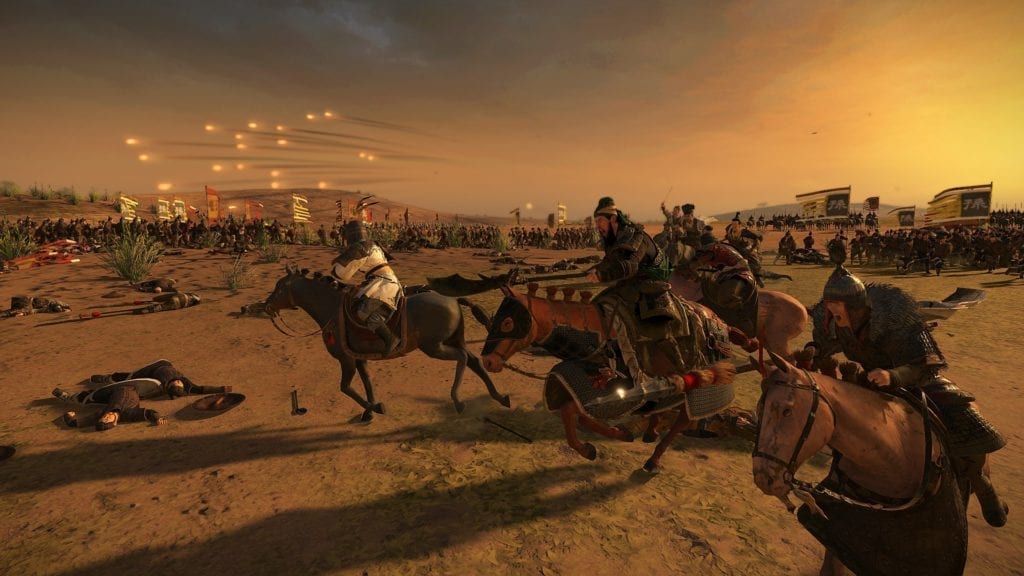
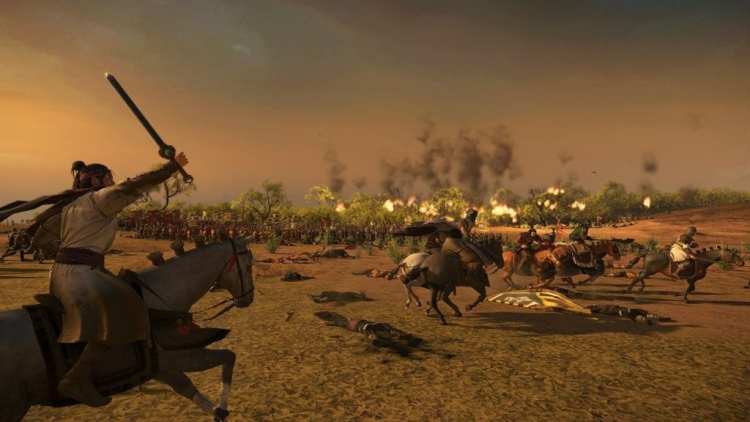
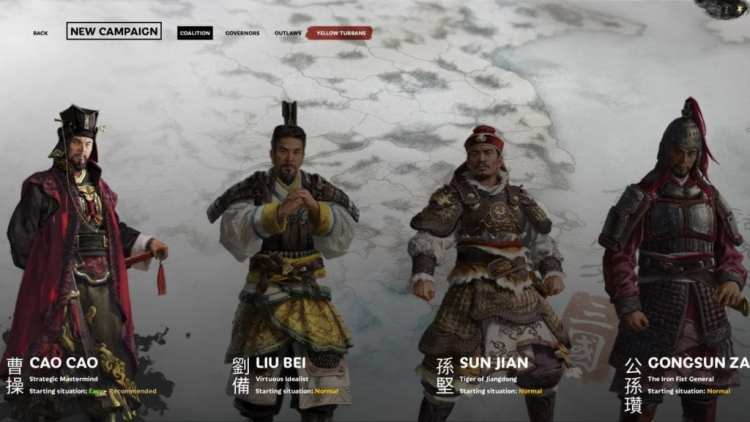
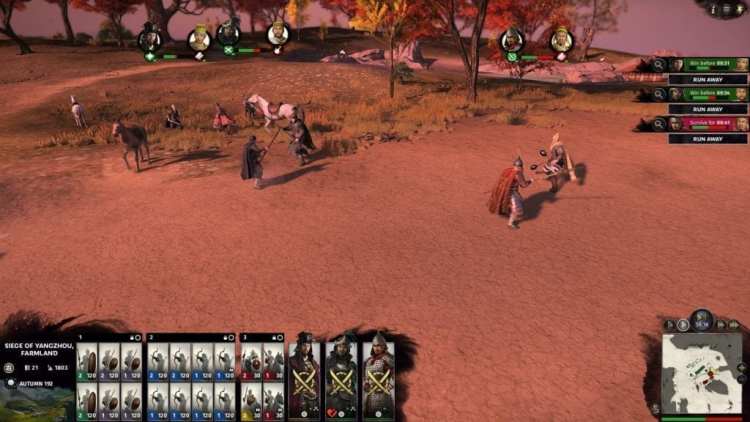
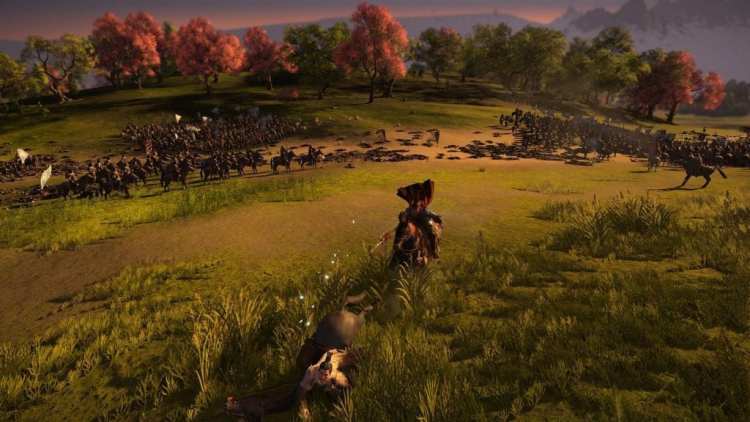
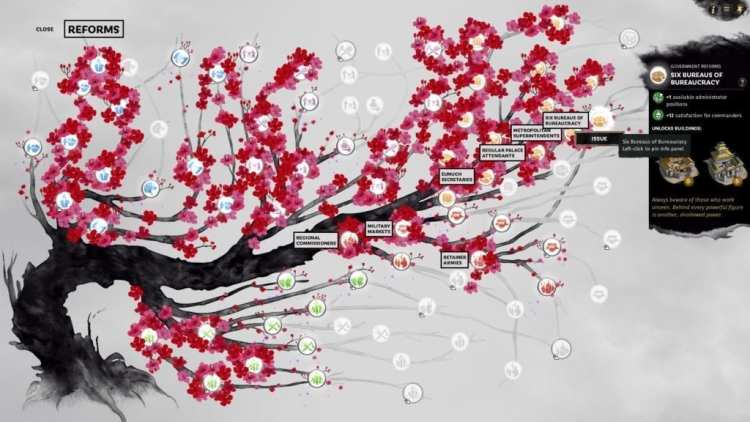
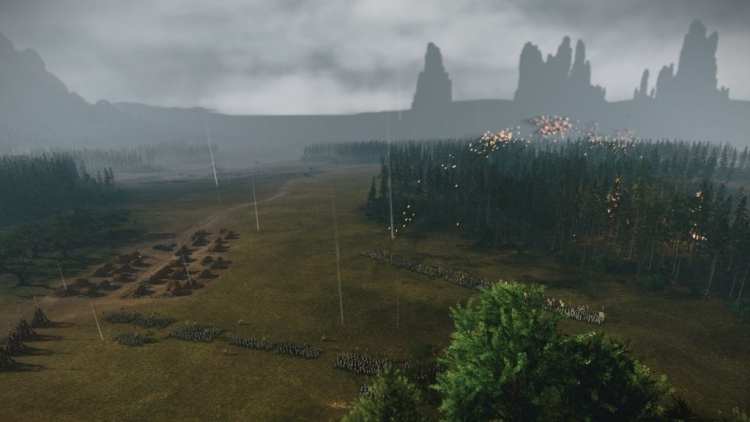





Published: May 16, 2019 10:03 am